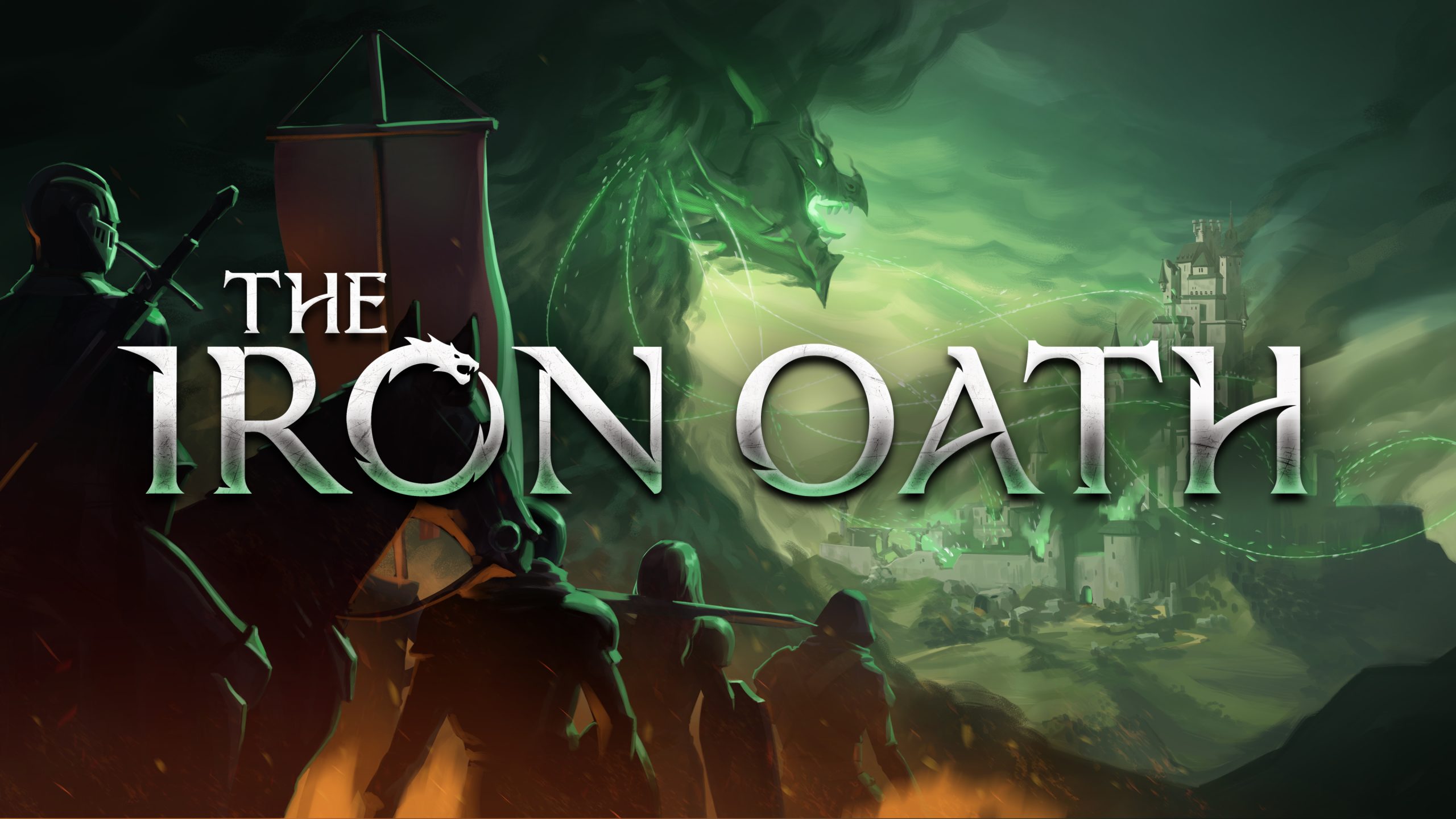The Iron Oath is a turn-based tactical RPG where the fate of your mercenary company rests on your decisions. Customize your roster, build your renown, and discover the secrets that await in the medieval fantasy realm of Caelum.
In the ever-evolving landscape of indie gaming, few titles have sparked as much intrigue and admiration as The Iron Oath, a turn-based tactical RPG that immerses players in the rich, medieval fantasy realm of Caelum. Today, we’re thrilled to sit down again with Curious Panda Games, the masterminds behind this dark fantasy world, where the fate of a mercenary company lies in the balance of player decisions. From the sprawling time scales to the intricate character backstories, The Iron Oath offers a unique blend of strategy, storytelling, and survival in a world teeming with danger and opportunity.
As we celebrate the game’s much-anticipated 1.0 launch, we delve into the creative process, challenges, and triumphs that have shaped The Iron Oath into one of 2023’s standout tactical RPGs. Join us as we explore the journey of its creation, the nuances of its gameplay, and the vision that drives its creators.
Howdy! I just want to say thanks for doing the interview and congrats on the big 1.0 launch!
Thank you! It’s been pretty hectic since our launch, but we’re happy to take some time to answer a few questions!
First Turn
In most RPG’s, the time scales work in the span of days to traverse their worlds, but your game can take months to complete quests and dungeons, as well as the campaign can last hundreds of years. What drove you to work with such a large scale of time, and what difficulties did you run into?
We were initially inspired by the time scale of games like Crusader Kings, and we liked the idea of playing with multiple generations of characters and seeing the world evolve over time through wars and successions. In practice, this was very hard to pull off, and finding a balance where time moved fast enough but players still got to spend enough time with their characters before they retired proved too difficult to achieve.
In the end, we ended up scaling back on the time progression by quite a bit. When we launched into Early Access, we also realized that a lot of players were resistant to the idea of their characters aging and retiring, so it’s something that we’ve put less emphasis on and chose to focus our efforts elsewhere. They still age and retire eventually, but there’s enough of a buffer there where the main storyline can be completed before that happens. We think it was the right choice, as the initial time scale was also problematic from a storytelling point of view.
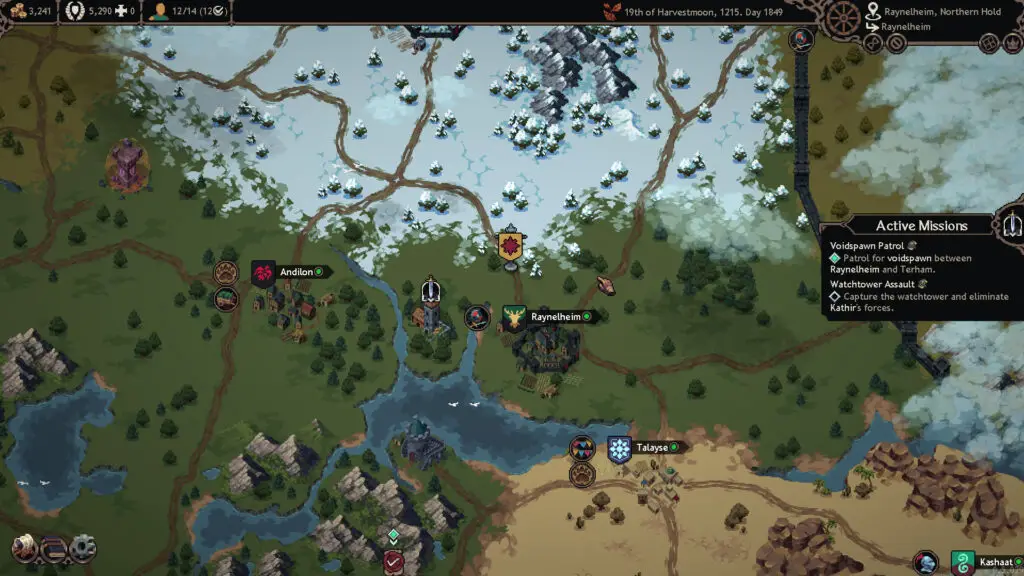
Second Turn
How do you balance when you find one class is overpowered? Is it a matter of debuffing them, buffing other classes, or altering the world in a way to make the class more viable?
A little of everything. There have been a few abilities that have needed to be buffed, nerfed, or reworked, but in general the classes each have their use and we feel they are quite balanced. Most enemy types have damage resistances and vulnerabilities, which allows each class a chance to shine depending on what you’re up against. So even if one class is perceived as slightly weaker than the rest, they will still be useful in dealing with certain enemies and situations. Overall, we’re not too concerned with achieving a perfect balance since it’s a single-player game (especially if it’s a nerf to something that many players are enjoying), but we’re always listening to feedback and will step in when tweaks are needed.
Third Turn
I was hooked in the first couple of minutes when starting out. How do you write compelling characters and what makes a character compelling to you?
Honestly, I don’t think it’s something we were really conscious about. We were more focused on mapping out the story as a whole first, and once we figured that out, the roles needed and the characters for them just kind of fell into place. When writing, I just try to insert myself into each character’s shoes and come up with dialogue and actions that I feel would be realistic with the game’s setting and story. Medieval fantasy books are probably my most read genre, so I think just reading a lot of those stories that deal with similar themes helped on some level with the writing for our game.
Fourth Turn
With an ever-changing world, complex character backstories, and so many player-focused decisions, how does the studio keep track of all these interconnected systems, especially when you need to tweak or rework them?
There are a lot of systems at play, but we have spreadsheet files for everything to help keep track of it all. Things like balancing the economy and adding new classes (with new abilities and all their upgrades) have been some of the bigger challenges to manage, especially in the case of a new class, which adds hundreds of new variables and interactions to the game. Overall, with all the systems we have, playtesting has definitely been a big time sink. It can take a good amount of time to see the effect of even some minor changes, and if it doesn’t have the desired effect, then we need to tweak and test again. With a small team, testing can definitely slow down development at times!
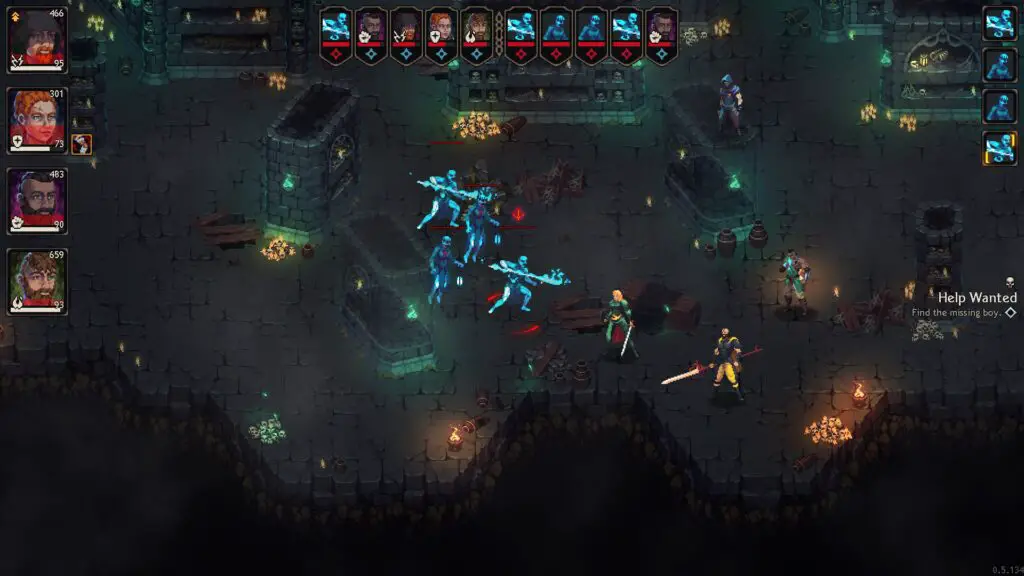
Fifth Turn
With such a small team of just two people, how do you manage to keep the scope of the game manageable so that you can finish the game in a timely manner?
It has been difficult at times. We have no shortage of ideas that we think would be fun additions to the game, but with just the two of us, there is only so much we can do in a reasonable time frame. We’ve had to cut back on a few things throughout development and instead focus on the core mechanics of the game and making them the best they can be. We hope that in the future we can bring back some of the ideas we’ve had to shelf over the years.
Sixth Turn
After being in early access for one and half years, how did you know when the game was ready 1.0. What were some big lessons learned during that time?
With our two major updates in March and August (Friends and Foes and Tales by the Fire), we addressed a lot of the feedback we’d received during Early Access and felt the game’s core mechanics (combat and dungeon exploration) were in a good place. We released one more smaller update that introduced Named gear (which has been a big hit), and then began to finish up the game’s main campaign. We could have kept iterating in Early Access, but with the main campaign being complete and the game’s mechanics in an enjoyable state, we felt it was ready to launch into 1.0 and let people experience the first of many stories we plan to tell in “The Iron Oath.”
As for lessons learned, that’s a bit tough to answer. We learned that a lot of our players weren’t too keen on aging and retirement mechanics, and were more interested in an enjoyable story they could see through from start to finish with the same characters. I think overall, the game has become slightly less of a sandbox than we initially planned, and going forward, we will continue to focus on making more hand-crafted storylines for players to experience with their company.
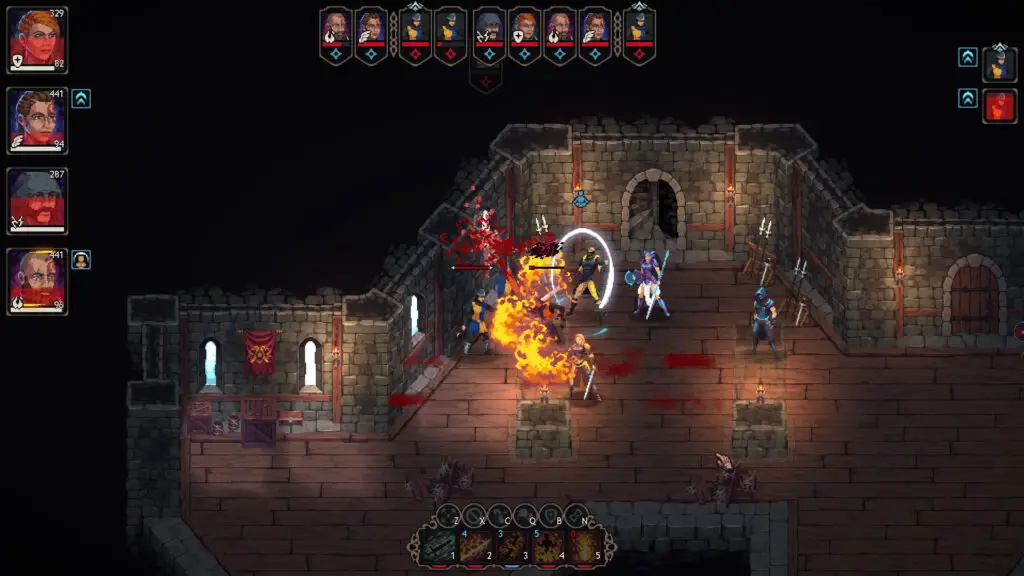
Seventh Turn
Your studio only had one prior release to “The Iron Oath”, which was a rhythm shmup called “Rhythm Destruction”. What made you take such a big risk on since then and why pivot to a completely new genre?
Rhythm Destruction wasn’t much more than a hobby project that we created together in our spare time. I think we both knew that it wasn’t ever going to be something that would allow us to switch to full-time indie development. After that, we wanted to try and do something that we both were passionate about and that we felt there was a market for. Fortunately, we had a successful Kickstarter with “The Iron Oath” and haven’t looked back. We hope to continue expanding on the game for a few more years.
Eighth Turn
With an ever-evolving world, what kind of events can players face that will change the overworld, and what effects will this have on the player?
There are a number of events that can occur in the game’s cities which determine things like the prices of goods, the quantity and quality of gear or recruits available in cities, and which quests are given out. The two events that have the largest impact at the moment would be wars between the nobles, and the Scourge itself where the dragon comes and attacks a city. Both events give the player opportunities to get involved by completing quests unique to those events and make some coin in the process.
The Scourge Crisis event gives the player a limited time to help the target city and improve their chances of survival, culminating in a final battle to determine the city’s fate. If unsuccessful, the city will be destroyed, and take a few years to rebuild itself. Wars can also result in cities being conquered or destroyed, and while the player can’t directly get involved in attacks on a city, that is something we’d like to expand on in the future.
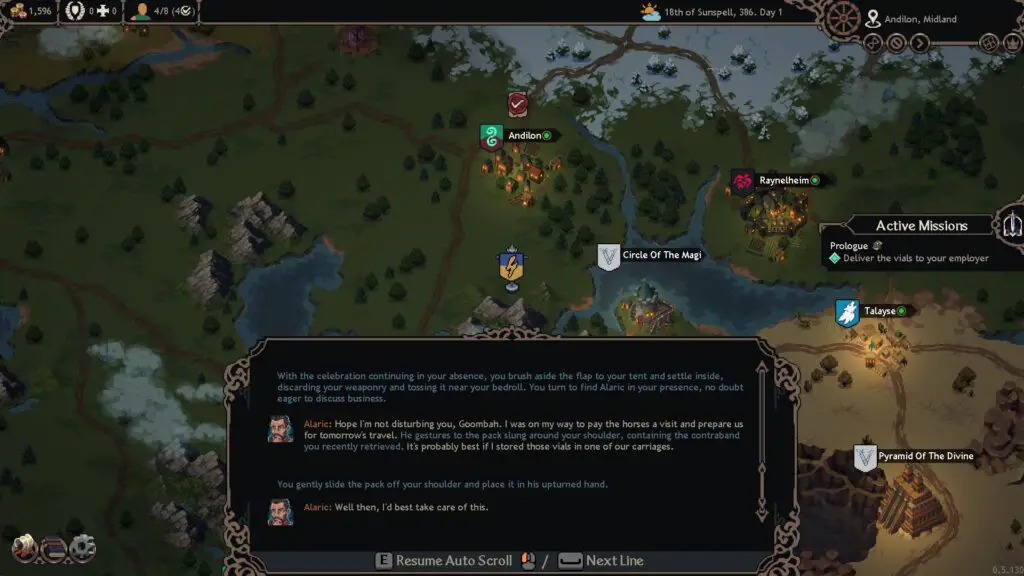
Nineth Turn
“The Iron Oath’s” campaign can span a huge time frame. How do you keep players engaged with such a potentially long play session for runs?
We’ve balanced the game and implemented the campaign in a way so it can be completed in around 25-30 hours if the player focuses on it and spends less time on side quests. While we liked the idea of having a potentially really long campaign, the reality is that only a small fraction of players will ever play that long, and we wanted to make sure that players who typically only spend 20-50 hours with a game could pop in and experience it from start to finish and walk away content with that. With the way things are now, we think there’s enough to keep players engaged in an average playthrough as they level up, upgrade their abilities, and gear up their company with Named and Legendary gear.
The biggest challenge for us so far has been keeping the player’s interest through the first few hours before they really get into the meat of the game and its combat. It’s something we’re still looking to improve as the game has a lot of mechanics and a big learning curve.
Tenth Turn
What tips would you give upcoming artists who want to make their art style create such an immeasurable game feel like “The Iron Oath”?
Because we wanted realistic dimensions on our characters (as opposed to a chibi style which is usually more common with pixel art), we took a good amount of inspiration from old school fighting games when designing our character’s sprites. The game Duelyst also had a big impact on the direction we ended up going with our ability animations, with almost every character having big flashy particle effects with their attacks. I’m not sure I really have any insightful tips, but if you’re new to pixel art like we were, it’s helpful to study the art styles of other games and their sprites and figure out how they achieved certain effects or textures, and then figure out a way to incorporate those techniques into your own style.
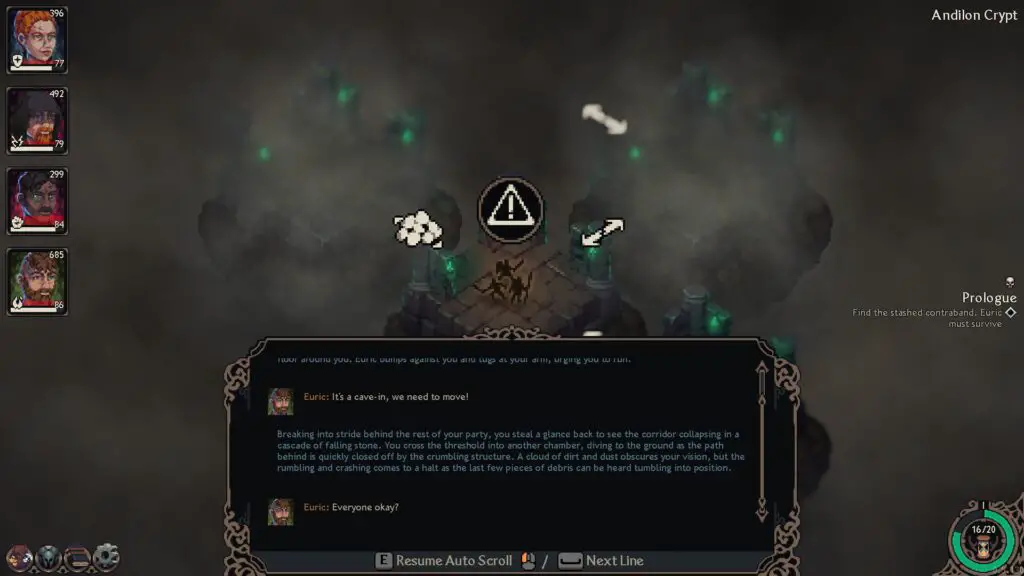
Bonus Turn
In such a brutal, unforgiving world, what role would you seek out to try to survive in Caelum? Or could you see yourself as a mercenary and leading a company given the right circumstances?
There aren’t too many positions that would be desirable, that’s for sure. I think the role of a
somewhat wealthy merchant would be the safest bet. The nobles have power, but between the
wars and revolts, you probably wouldn’t last very long!


